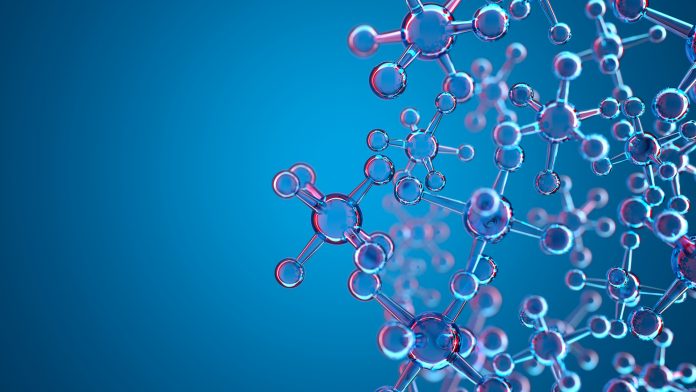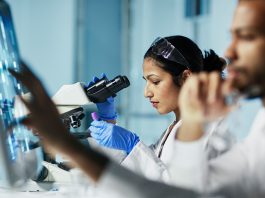By using machine learning techniques, researchers at Graz University of Technology (TU Graz) can predict the structure formation of functionalised molecules at the interfaces of hybrid materials.
The manufacture of nanomaterials includes self-assembly processes of functionalised (organic) molecules on inorganic surfaces. This combination of organic and inorganic components is vital for applications in organic electronics and other areas of nanotechnology.
Previously, specific desired surface properties were often achieved on a trial-and-error basis. Molecules were chemically altered until optimal results for the desired surface property was found. However, the processes controlling the self-assembly of molecules at interfaces are so complicated that small molecular changes can lead to entirely different motifs.
The researchers have illuminated their findings on this unexpected structure formation in a study published in journal ACS Nano.
The group observed quinoid compounds on a silver surface. First author Andreas Jeindl from the Institute of Solid State Physics explains: “Naively, one might expect molecules with slightly different sizes but the same functionalisation to form similar motifs. In striking contrast, our joint theoretical and experimental study shows that quinones can form diverse structures. Despite constant initial conditions, the formation of these structures cannot be predicted and planned without detailed knowledge of the relevant interactions.”
The TU Graz team, along with a team from the Friedrich Schiller University Jena have been able to begin breaking down this unpredictability. They discovered that the structure formation is the product of a trade-off between three opposing driving forces: the interaction between molecules and the metal tries to push all molecules into the same orientation, while the interaction between molecules can favour different orientations. The geometric shapes of the molecules then act as a third factor, blocking or only partly enabling certain interactions.
Based on this understanding, the team were able to develop a design principle with which the structures that form at the interfaces, and subsequently their properties, can be predicted – at least for a first class of molecules. A search algorithm based on machine learning plays a significant role.
Jeindl explains: “We were able to show in this publication that the structures predicted by our algorithm are in excellent agreement with experimental characterisations of organic-inorganic interfaces – both in how the molecules orient themselves on the surface and in how the motifs repeat on the surface. Moreover, our analysis, for the first time, allowed a detailed and quantitative break down of the driving forces, not only of the experimentally formed structures, but de facto of all conceivable structures. This is an important look behind-the-scenes of structure formation.”
By examining the driving forces, the scientists have been able to formulate a design principle for the self-assembly of functionalised molecules for a given class of molecules. Once there are enough analyses for different classes of molecules, the right molecules for the desired interfacial properties can be easily assembled on the computer from modular building blocks.









